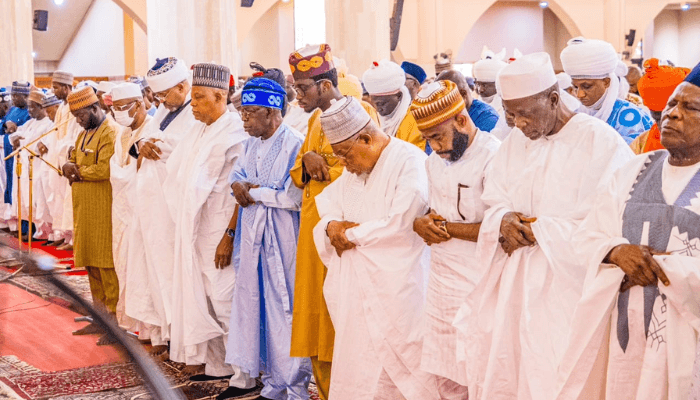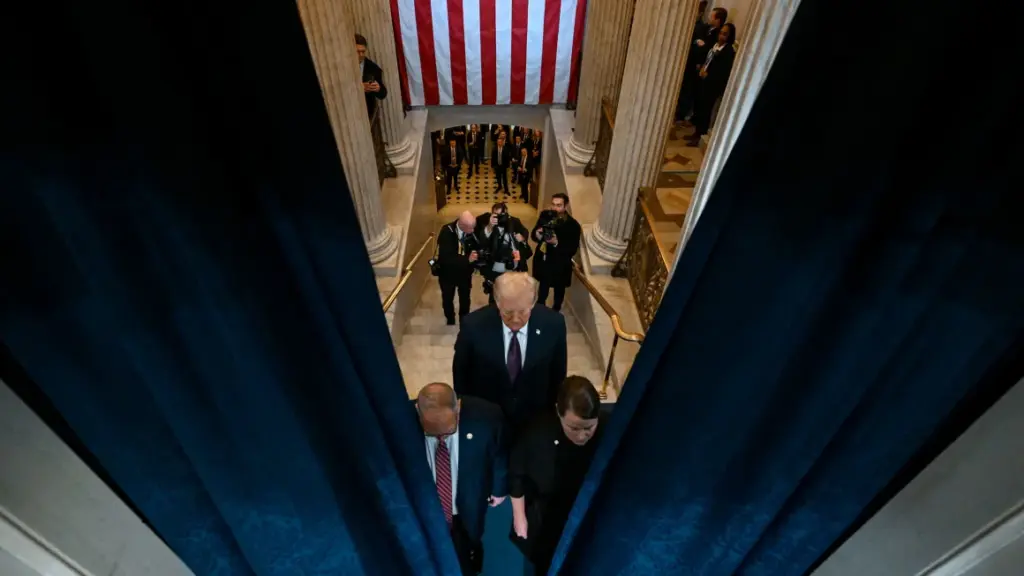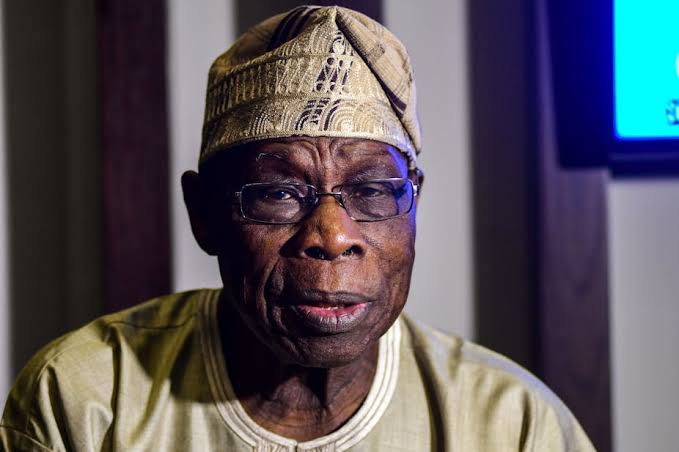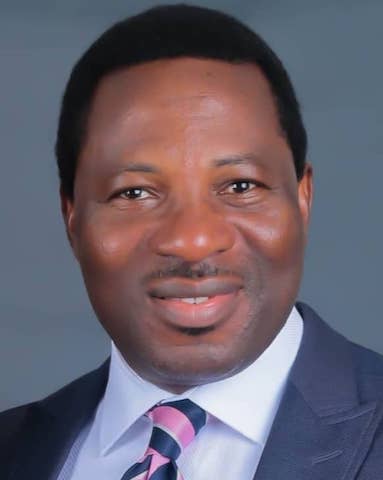Advice to the Next President

Politics tamfitronics

Science is the beating heart of progress, yet its critical role often gets drowned out by the clamor of political theater. With a national election looming in the United States, the Aspen Institute Science & Society Program contacted some of the most lauded scientists in this country—including Nobel laureates and holders of the National Medal of Science—and asked them to share their recommendations on how the next President should bolster American science and draw on scientific insights to help address the nation’s most pressing problems.
These heavyweights from biomedicine, chemistry, neuroscience, physics, and environmental studies largely converged on the big issues facing the country and the world, even as they offered diverse perspectives on the best ways to tackle those issues.
One recurring theme across the responses is that science is more important than ever in a fractured society. Enormous social challenges like climate change, an aging population, and artificial intelligence are made even more difficult by deep disagreements over how to tackle them. These experts say that science-informed responses offer the best opportunity to break through the polarization. Chemical engineer Frances Arnold, for example, argues that science can bridge divides by offering solutions that transcend political and social boundaries. As she puts it, science is “our one universal language.”
Our respondents see the rise of anti-science rhetoric as a dire threat to the future of the U.S. They raise alarm over growing irrationality and political manipulation of scientific facts in American society and around the world. This dangerous trend not only jeopardizes the country’s ability to advance knowledge but also undermines the capacity to confront global crises such as public health emergencies.
Many of the experts’ responses call for a revamp in the U.S.’s approach to STEM (science, technology, engineering, and mathematics) education, arguing that a changing world requires new ways of teaching and learning. Experts including physicist Carl Wieman advocate for a transformative shift, away from memorization and toward using science as a creative tool for better decision-making and deeper understanding. Many of the experts also emphasize the importance of an inclusive workforce, highlighting the invaluable contributions of immigrants to U.S. scientific achievements.
Scientific progress has been an integral part of American identity from the start. Article I of the U.S. constitution calls on Congress “To promote the Progress of Science and useful Arts.” Since then, the challenges the country faces have changed radically, but the optimal strategy for facing them remains the same: investing in groundbreaking research, nurturing the next generation of scientific minds, and upholding the scientific method as our greatest tool for building a safer, happier, healthier, and more just society.
Contributions compiled by Aaron F. Mertz and Kyler Zhou.


It is time to heal divides by remembering what we share—a deep love for our children, our nation, and our jewel of a planet. We also share science, our one universal language. Science is an expression of our deepest curiosity and desire to understand where we came from, where we are, and where we are going. It is also a powerful tool for making difficult choices on where to invest and where to stand back. Without science, we lose the opportunity to guide the future.
Science does not take sides. Science provides understanding, and it provides the fuel for innovation and prosperity. Science can help unite the country and guide us into the future we want to see. Please move to support and replenish the science and technology workforce in the federal government, and make use of the voices outside the federal government that love our nation as much as you do. Here you can lead by example.
We are a great nation, with but a small fraction of the world’s population. Most of the smartest and most creative people are born outside our borders. Let us continue to welcome them here, where they will push the frontiers of science, inspire us, and create wealth and opportunities.
Frances H. Arnold
Linus Pauling Professor of Chemical Engineering, Bioengineering and Biochemistry
California Institute of Technology
2018 Nobel Prize in Chemistry


Twentieth-century science yielded many inventions that revolutionized everyday life: the airplane, the computer, the cell phone. We even landed on the moon, the iconic demonstration of scientific achievement. In contrast, the problems we’re trying to solve in the 21st century—curing brain disorders, addressing climate change, confronting aging-related diseases—can seem enduringly daunting. What should we do?
Scientific fields often undergo revolutions when they achieve a “ground truth” level of understanding, a description of the fundamental building blocks of the system being studied along with how they interact with each other. For example, airplanes, computers, cell phones, and moon rockets all build on the scientific field of physics. In the early 20th century, physicists began to achieve a “ground truth” understanding of physics, sufficient to explain a wide variety of phenomena. This understanding galvanized countless innovations, like those named above. The scientific risk associated with inventing something new was reduced to the point where engineering and design could proceed predictably and robustly.
Why are 21st-century problems so hard? Physics involves a small number of building blocks, and a small number of ways they interact. In contrast, brain science, climate change, aging, and many other 21st-century problems involve far greater numbers of building blocks and interactions. Addressing such problems requires technologies to see and control the relevant building blocks, as well as their interactions, to reach “ground truth” understanding. To generate such tools will require scientific institutions, funding, and culture that welcome serendipity, because “ground truth”-oriented tools often emerge, in part, through luck. (For instance, CRISPR was discovered in yogurt; PCR was enabled by microbes from hot springs.) But luck can be engineered. Systematic approaches—such as trying to think of every way to solve a problem, or examining partially failed solutions to see how they could be rebooted towards success, or creating new kinds of collaboration between problem-experts and solution-providers—could enable us to augment our serendipity.
Such tools will need to be systematically applied to the complex systems in question, so that “ground truth” data can be acquired, new principles discovered and models made, and new eras of engineering and design opened up. The low-science-risk field of physics continues to bear fruit; based upon the revolution launched by the computer, one can drop out of college and start a company like Apple, Microsoft, or Facebook. Perhaps someday a college dropout will cure a brain disease or solve another big 21st-century problem. Then we will know we have succeeded.
Edward S. Boyden
Professor in Neurotechnology
Massachusetts Institute of Technology
2016 Breakthrough Prize in Life Sciences


In my essay four years ago, I made three major requests of the incoming president: 1) “increase support for both fundamental and applied research”; 2) “put more resources into educating future scientists [and] provide opportunities to increase diversity within the sciences”; and 3) “ensure that governmental decisions and administrative policies are based on strong scientific consensus.” These requests were long-term goals, so no one would have expected them to have been achieved in a single presidential term. I believe that the past four years have seen increased support for them. Nonetheless, these goals remain aspirations for the future.
Unfortunately, the need for decisive action in support of science and science education remains high. As I write this piece, New York City is seeing once again a surge in COVID-19 cases, and concern is growing in the U.S. about bird flu being transmitted to people. Additionally, the world has just experienced the hottest summer ever recorded.
Addressing problems of health, climate, food security, and many other issues requires a multifaceted approach. To implement what I outlined above and in my previous essay, the next four years should see both immediate support and long-range support. We need immediate financial support to enable research that can cope with the issues we are facing and to rejuvenate and invigorate STEM education to produce the workforce that will make the next series of breakthroughs. In addition, we need to realize that we simply do not have enough of the basic scientific knowledge that will allow us to address these global challenges.
Increasing our knowledge base should be a top priority. In my opinion, the discussions by politicians and in the news media about using science to address societal problems are often couched in terms that make the efforts seem like engineering problems. We talk about scientific endeavors being “moonshots,” based on the incredible effort that landed Neil Armstrong and Buzz Aldrin on the moon in 1969. For example, much of the discussion on how to solve our current climate disaster seems to revolve around attempts at lowering carbon emissions, switching from fossil fuels to “clean energy,” and sequestering CO2 and other greenhouse gasses. And advocates for disease research, albeit acting from the very real pain and suffering of loved ones, focus on projects to find immediate treatments or cures.
These approaches should be pursued, but talking about the problems in terms of applying existing knowledge neglects the enormous gaps in that knowledge. For example, Manu Prakash at Stanford University, in a talk to the annual meeting of the American Society for Cell Biology, pointed out that oceans are major repositories of greenhouse gasses, but our knowledge of their capacity and the processes involved is minimal. With regard to human biology, we have tools and knowledge that were unimagined 25 years ago, but we have much more to learn. We still do not understand the functions of most of the genes in the human genome.
The argument for increased support for basic research is that it has repeatedly provided new insights and approaches to address the problem that we all want to solve. Improvements in imaging have given us unprecedented ways of studying biological processes, and gene-editing techniques have provided novel ways of correcting processes gone awry in human disease. We are currently in a golden age of scientific discovery, and we must continue to expand this work.
Finally, I want to add two new priorities. First, although not a new problem, we are seeing an increase in attacks on scientists and health professionals. Protective measures, including new legislation, are needed to ensure scientists, doctors, and nurses are safe from attacks and intimidation. Second, we must invigorate and enlarge the public-health infrastructure in the U.S. To many of us, the COVID-19 pandemic revealed how much more a strong, scientifically based public health system could have saved lives and kept people safe. Making people healthy is not only the work of researchers.
I have enormous respect for the scientists, engineers, and health professionals who wor k daily to improve our health and wellbeing. Supporting and encouraging them should be a major priority in the next four years.
Martin Chalfie
Professor of Biological Sciences
Columbia University
2008 Nobel Prize in Chemistry


By leading our country over the next four years, you will have the opportunity to impact the policies and practices that support novel biomedical research and technologies and that promote and govern their application in human health and disease. A sound science-based policy agenda will profoundly improve the safety, health, and lives of all Americans for generations.
Past federal investment in biomedical research has been extraordinarily productive. Largely through research conducted or supported by the National Institutes of Health, the U.S. has pioneered the development of crucial diagnostic procedures, novel treatments, life-changing cures, and new prevention strategies for a broad variety of disorders, including cancer and heart disease. Innovative advances in areas like gene therapy and gene editing have been developed based on discoveries from basic research, directed not toward curing any specific disease but rather toward the exploration of new areas of biology.
Nonetheless, the biomedical research community faces serious challenges. With the aging of our population, threats of epidemics, and dangers of bioterrorism, bold investment in and strategic priorities at the NIH will be crucial to protect our citizens.
That is why I helped prepare a recent report, Beyond 2020: A Vision and Pathway for NIH. I recommend this report to you as you begin your new term and look to seize opportunities to propel 21st-century biomedicine. The report emphasizes three recommendations: 1) The NIH should ensure that its research portfolio prioritizes funding fundamental investigations; 2) the NIH should develop new grant mechanisms that emphasize novel ideas and support highly creative scientists; and 3) the NIH should develop a new peer-review process that identifies and rewards bold innovative ideas and foundational approaches.
In addition, it is crucial to develop mechanisms to ensure a robust pipeline of young scientists, not only in the field of biomedicine but also more generally in other areas of STEM. As newly trained young people become leaders in academia, industry, and government, their understanding of science will help them shape public policy in the increasingly complex and challenging world in which we live.
A national commitment to scientific research is essential to unlock our enormous potential for revolutionary breakthroughs and to maintain U.S. world-wise leadership in science and technology. You are uniquely positioned to seize this moment to address today’s challenges and ensure a strong future for science and innovation in the U.S. and in the world.
H. Robert Horvitz
David H. Koch Professor of Biology
Massachusetts Institute of Technology
2002 Nobel Prize in Physiology or Medicine


What worries me the most is the undercurrent not just of anti-intellectualism, but more deeply of irrationality. When logic, cause-and-effect, and the primacy of demonstrated truths lose their societal power, we are in grave trouble indeed. This must be how a Dark Age starts.
I take the point that we scientists and humanists have brought on some of the problems ourselves. I think that our scientific generation, or at least those such as myself, has been blindsided by the power of nescience. Through the activities of big tobacco, then big petroleum, then-President George W. Bush’s “let’s study it further” response to global warming, it has only gradually become clear how great are the numbers of interests, and how great are the amounts of money, that have been mustered precisely to deflect, defer, and ultimately defeat science.
A. James Hudspeth
Director of the F.M. Kirby Center for Sensory Neuroscience
Rockefeller University
2018 Kavli Prize in Neuroscience


I write as a deeply concerned scientist, woman, mother, and grandmother in a time of uncertainty. Science holds tremendous promise to benefit and stabilize society. That said, the success of future ventures will be closely tied to the wisdom, vision, and integrity of the next administration.
We have just experienced the hottest summer on record across the country, highlighting (again) the disruptive impact of climate change on humans and other species. The rapid shift of science toward new catalysts, energy sources, carbon capture, and bioremediation is impressive. But time is fast running out to moderate the extreme damages from climate change. Immediate changes in behavior could have a big impact, for example:
- Increase governmental incentives and rebates (for restructuring homes, offices and means of transport) to accelerate awareness and action at the individual level.
- Eliminate non-essential governmental air travel. Airplane flights have been shown to be the largest contributor to personal carbon budgets. Governmental change could lead to similar change within the private sector.
- Invest in advanced remote technologies that can rival the best qualities of in-person venues.
The low level of scientific literacy in the U.S. remains a divisive political issue, differentiating rich states and communities from poor ones. This rift calls for a focus on enhancing scientific literacy within the least educated states and regions. It will be important to identify local educational leaders who would be interested in summer enrichment programs for their communities. At the same time, we should recruit a “literacy corps” of advanced high school and college students (and possibly retired faculty) from regions of established scientific excellence. Create small grants to cover summer living expenses and stipends for the selected students and local administrative costs.
Throughout the rapid process of ongoing change, we must not lose sight of basic research. Science is a discipline built on conceptual and fundamental breakthroughs. Many young people are deeply curious and drawn to this inherent quality of science. We need to retain and encourage such people within the scientific establishment. They are the bedrock for future technological advances.
Judith P. Klinman
Professor of the Graduate School of Chemistry
University of California, Berkeley
2014 National Medal of Science


As a teenager, I remember lying on my bed on a summer’s morning, watching tree leaves softly move in the breeze, trying to reconcile their apparent calm with my nascent knowledge of the miraculous complexity of the biochemical mechanisms found in each of their cells. Even after a full lifetime studying neurons and the circuits they form in the brain, I still find biological systems infinitely fascinating and full of mystery. Today, I study the relative robustness of the nervous systems of North Atlantic crabs and lobsters as they face warming ocean waters. We try to understand the mechanisms that confer biological resilience to animals facing extreme temperatures and altered environments.
Sadly, the relevance of our work on marine animals is all too applicable to humans who are today suffering from a myriad of neurological conditions, such as seizures and stroke, that are exacerbated by extreme temperatures. The science of the future must continue to combine study of fundamental biological mechanisms with societal-level changes that will protect all life into the future. We face new challenges in science education as students have access to enormous amounts of knowledge, but must still remember what they have learned in order to think creatively and innovatively. At this moment, science and science education are needed more than ever to provide society with the essential tools to cope with the problems of today and tomorrow.
Eve Marder
Victor and Gwendolyn Beinfield Professor of Neuroscience and Biology
Brandeis University
2023 National Medal of Science


What has science done for us lately? Well, how about electric everything, from cars to buses to trains to ships to airplanes? How about a drug that stops people from getting HIV? Or vaccines against COVID-19? We’ve got them. We need more of all that, and you as President have a lot to do with it. The government sets policy, makes laws about who profits, and develops and buys the latest technology, after all. You, as President, can lead with the future in mind, making sure we have what we need in a changing world.
We can protect the environment, protect the people, provide for the common welfare, and maintain peace. Science and engineering and math and technology give us the joy of finding out things, and the joy of knowing that we’re providing for our kids and grandkids. Every big problem you face in leading the nation and the world has a basis in something technical. Just ask!
John C. Mather
Senior Astrophysicist
The National Aeronautics and Space Administration (NASA)
2006 Nobel Prize in Physics


Our epoch will be remembered as the golden age of biology. Today, we can visualize molecules with microscopes, study thousands of genes and proteins at once, and visualize whole-body physiology in real time. Combined with analytics and artificial intelligence, this capability is leading to exponential progress, with the potential to cure many diseases and improve life. The problem nowadays is not trying to make something work but having to decide what to study first. We don’t have enough people and money to do all the good science we could do. Yet we need to renew our commitment in unbiased science, or we will be left behind.
One danger is political. I hope that you, our next President, will only appoint the best people, independent of politics. Technical jobs must be filled based on experience and expertise, not opinions. The reason is that scientific truth always wins over opinion. We must put the best people in charge and simply let the best research happen. Many impactful discoveries have been made in basic science areas where applications were not obvious. Consequences can be difficult to predict, too. Who would have thought that inventing the atomic bomb would have ushered one of the longest eras of world peace?
We must also invest a lot more in research and training. Science is not valued enough. Researchers are not well paid. Funding is insufficient. Physicians, exhausted by decades of studies, don’t want to do research. Medical costs are absurdly expensive, many time s higher than they are in Europe, for an inferior result. In the disease I study, narcolepsy, treating one patient costs about $250,000 per year in medication alone. Yet I am in heaven when I receive an NIH research grant of $400,000 a year; and for this I must write hundreds of pages, submit multiple times, and when funded, report and justify constantly.
Finally, I see regulatory and administrative overreach. We constantly must take useless mandatory training courses and sign paperwork online. Research or clinical trials take years to get off the ground. Visas that used to take three weeks now take six months. Collaborating with Germany on a federal grant requires a review by the State Department. It is so complicated to do international research, that some of my willing patients have died before they could contribute their sample. Privacy regulations are excessive. Patients don’t realize the cost involved in trying to prevent—unsuccessfully, I may add—any small breach of private information. I compare this to how we protect our home. It is easy to pick a lock, yet we don’t use security doors everywhere. Billions could be saved.
We have the opportunity to become the leading country in biological sciences and medicine in the next four years. This could be vastly profitable. For this, knowledgeable scientists and doctors with a vision must be in charge, politics and excessive regulation must be avoided, and investment plus training must be increased.
Emmanuel Mignot
Director of the Stanford Center for Narcolepsy
Stanford University
2023 Breakthrough Prize in Life Sciences


Science provides a cornucopia of benefits to humanity. These benefits include fertilizer to increase our output of foodstuffs, modern transportation to whisk us around, and the polymers that are molded into forms ranging from lightweight plastic bags to artificial hands. But these and other miraculous advances have often displayed a darker side—those of damage to nature as well as to ourselves. Every scientist, and indeed every non-scientist as well, can now perceive for themselves the dangerous and personal risks of climate change, air pollution, unbridled waste, ecological destruction, and more. A forward-looking nation that wishes to remain competitive in today’s global marketplace will need to foster science that leads to practical innovations and will need to ensure that we understand and safely deal with known environmental risks as well as novel ones.
Fantastic new discoveries that would continue to lift up society and increase American competitiveness are undoubtedly just around the corner, waiting to be revealed. Your presidency will shine if it augments the funds for our national scientific enterprise, because in this 21st century we need science more than ever. We need it to lead us not just to more prosperity, but also to a more sustainable future. Fruition of new discoveries depends just as much on the influx of young bright minds as it does on the provision of adequate funds, and the federal government that you lead plays an outsized role in the future health of both factors.
Our universities today are the envy of the world, and we attract young scientists from all over the world. To continue to excel, we must welcome these people, avoiding an insular approach to university student and researcher entry and residence visas. And we must also do better at stimulating our own younger students in every community across America to flourish in STEM subjects, starting with first grade and continuing through high school, with a nationwide renewal of STEM curricula and teaching methods that are both more inclusive and more appealing to our diverse national population.
Susan Solomon
Lee and Geraldine Martin Professor of Environmental Studies
Massachusetts Institute of Technology
1999 National Medal of Science


Science is a pervasive presence in everyone’s life, but most people don’t realize how much science they use. The essence of science is that it is independent of a person’s beliefs, religious or otherwise. Science is never a prescription for action. It informs society about choices for actions, but doesn’t decide such actions. For the future—not only of our country but of humanity as a whole—it is imperative that we isolate science and science education from non-scientific intrusions, because otherwise scientists cannot provide useful recommendations for action.
Moreover, it is essential that we take scientific conclusions seriously, because of their implications for the future. For example, as scientists we can state only that human activity is making the Earth become warmer rapidly, and that this warming is a cause of natural disasters. The decision whether economic sacrifices are justified to slow down this warming is a political one. As another example, it is well established that vaccinations against infections such as measles or rubella serve population health as a whole. Again, the decision whether to require vaccinations is a political one that science cannot make.
There appears to be an increasing tendency to ignore science because science is inherently apolitical and thus has no power. My sincere recommendation would be to act against this tendency, which poses a long-term threat to health and prosperity on Earth.
Thomas C. Südhof
Professor of Molecular & Cellular Physiology and of Neurosurgery
Stanford Medical School
2013 Nobel Prize in Physiology or Medicine


In 2020, I shared my advice to the next president of the U.S. Four years later, my concerns and recommendations remain much the same, because the underlying issues we face extend far beyond any one policy or any one administration.
Science and its associated technologies dominate modern society. Scientific advances are vital for the health of the economy and for the personal health of the citizens. Preserving this health requires ongoing investment in both scientific research and the development of future scientists. However, what is more important today is better science education for all students. That is what is needed for non-scientist citizens to thrive in the modern economy and to make wise public policy decisions about critical challenges society faces, including: climate change, the rapid advance of artificial intelligence, choice of energy sources, individual and public health actions, etc. These all have underlying technical aspects that must be understood to make sound decisions.
Responding productively to today’s big challenges requires a new type of science education, not the traditional memorization of facts and procedures. Students need to learn science as a process for arriving at better decisions and explanations and learn how to use science to make decisions. Research shows that such an education requires activities that give learners practice in making and critiquing relevant decisions.
Although such an education is far beyond what our schools are currently providing, it is far from impossible. Research in teaching and learning has provided new insights on how to cultivate this kind of thinking. Turning this research into widespread practice will require fundamental changes in how we think about teaching. Much as researchers have established medical expertise as a set of complex knowledge and practices that a doctor needs to know and apply to achieve good patient outcomes, we need to think about the teaching of science in the same way. This will require professionalization of the science teaching profession, with much more rigorous training in “teaching expertise.” The result will be the educational equivalent of switching from bloodletting to antibiotics.
Carl Wielen
Professor Emeritus of Physics and of the Graduate School of Education
Stanford University
2001 Nobel Prize in Physics
Lead image: everything bagel / Shutterstock
-
Aaron F. Mertz
Posted on
Aaron F. Mertz is the Founder and Executive Director, Aspen Institute Science & Society Program
Published in partnership with:
Get the Nautilus newsletter
Cutting-edge science, unraveled by the very brightest living thinkers.
Discover more from Tamfis Nigeria Lmited
Subscribe to get the latest posts sent to your email.



 Hot Deals
Hot Deals Shopfinish
Shopfinish Shop
Shop Appliances
Appliances Babies & Kids
Babies & Kids Best Selling
Best Selling Books
Books Consumer Electronics
Consumer Electronics Furniture
Furniture Home & Kitchen
Home & Kitchen Jewelry
Jewelry Luxury & Beauty
Luxury & Beauty Shoes
Shoes Training & Certifications
Training & Certifications Wears & Clothings
Wears & Clothings















